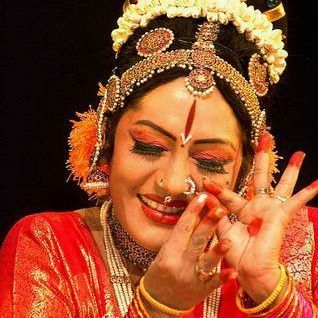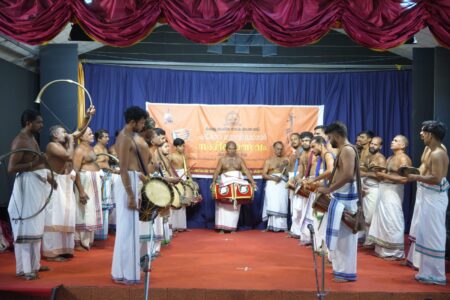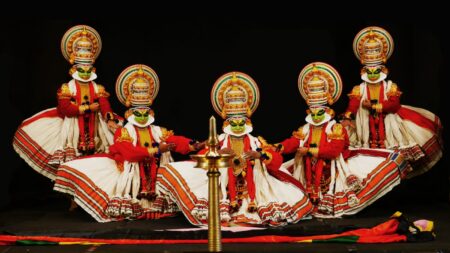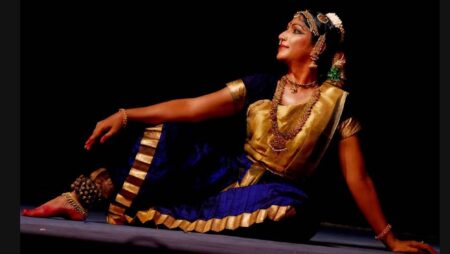Two stalwart performing artistes in south India died in mid-October. A peek at Shobha Naidu and S Natarajan alongside the link between Kuchipudi and Bhagavatha Mela
On October 15, Bhagavatha Mela lost a stalwart in S Natarajan of Tamil Nadu, hours after Shobha Naidu breathed her last in neighbouring Andhra Pradesh. Natarajan, 77, was a top exponent of Bhagavatha Mela, while 64-year-old Shobha earned fame in Kuchipudi, one of India’s eight classical dances.
Natarajan’s end came in Coimbatore, but he was a native of the Cauvery belt. His birthplace of Melattur near Thanjavur is considered to be the homestead of Bhagavatha Mela—the dance-drama that relies on mythological themes around Vishnu. Like in Kuchipudi, Bhagavatha Mela’s music is classical, requiring the actors to sing (besides, of course, dance).
The two forms share a historicity that continue to show in their common characteristics despite having split ways half-a-millennium ago. More on that after a quick profile of the two exponents who died in mid-October.
Natarajan and Naidu
S Natarajan, with a career spanning seven decades, was born in 1943 into a family that had just emerged central in a historic rejuvenation of Bhagavatha Mela in the early 20th century. His grandfather, V Ganesa Iyer, did transform the devotion-driven theatre into a movement that began to regain its deserving audiences towards the mid-1930s.
Iyer’s son, equally illustrious G Swaminathan, was the guru of Natarajan. As a youngster, Natarajan was also groomed under titans such as Balu Bhagavatar, K Ramani Iyer and G Krishnamurthy Sarma. Dancing being important to Bhagavatha Mela, Natarajan also received training in the techniques of Bharatanatyam under the illustrious K.R. Kittappa Pillai and Pandanallur Shanmugasundaram Pillai.

Excelling alongside in mainstream academics, Natarajn became an engineer. He found a job abroad, but that didn’t lead to sever his relation with Bhagavatha Mela. Dividing time, his association with the Shri Lakshmi Narasimha Jayanti Bhagavata Mela Natya Nataka Sangam of Mellatur lasted no less than half a century.
Natarajan was eminent in both dance movements (nritta) and facial emoting (abhinaya). Particularly celebrated were his heroines such as Leelavati (Prahlada Charitamu), Chandramati in (Harishchandra Natakarnu), Usha (Usha Parinayamu) and Mohini (Rugmangada) alongside as well as male protagonists Bhasmasura, Ravana, Bhishma and Dasharatha.
Natarajan kept directing plays, too. Into his twenties, he came up with productions that helped Bhagavatha Mela exclude non-traditional elements. The exit of curtains, for one. Certain non-textual parts, too, became a vestige; instead he restored the purvaranga that had become extinct. Quite a few classic plays (of Telugu poet Melattur Venkatarama Sastry [1770-1830]) came back, alongside youngsters’ renewed involvement in the performances. Natarajan published articles on Bhagavatha Mela, also while travelling widely to give lecture-demonstrations. The prestigious Kalaimamani and the Sangeet Natak Akademi award were among the honours that came to him.
As for Shobha Naidu, her art was a purist’s delight even as she was highly imaginative and catering to contemporary sensibilities without losing the classicism of Kuchipudi. Born in suburban Anakapalle of Visakhapatnam, her chief mentor was the legendary Vempati Chinna Satyam (1929-2012).
For four decades since 1980, Shobha served as the principal of Kuchipudi Art Academy in Hyderabad, becoming instrumental in the production of 15 ballets and 80-plus solo items. Many a time, she donned the protagonist—the most celebrated among them being as the mythological Satyabhama.
Never keen to accept offers from the film industry, she travelled with her troupe to cities in the West and East, including not just Europe and USA, but places in the Middle East, Latin America and Hong Kong and Cambodia. The awards Shobha won were several, the most prestigious among them being the Padma Shri and the Andhra Pradesh government’s Hamsa.
Age-old Bridge
Kuchipudi flourished as a dance form in an eponymous village (in Moova tehsil today) not far from Machilipatnam. With its origins tracing to the 13th century following the spread of the Krishna-Radha themes penned by poet Jayadeva in Gitagovinda, the art got its modern version four centuries later. That was courtesy Narayana Teertha (1650-1745) who penned a Sanskrit opera named Sri Krishna Leela Tarangini on the life of the blue-hued lord. His disciple Siddhendra Yogi’s Bhama Kalapam became a 17th-century masterpiece, popular on stage till date after its presentation in 1675.
Eleven decades before this, in 1565, the fall of the Vijayanagara empire (which had nourished the arts) and a subsequent turmoil triggered by Islamic invasions, led 500 Kuchipudi families to flee southward. They reached Melattur, where King Achuthappa Nayak welcomed them.
In their new settlement, the Bhagavathars carried forward their heritage. The changed socio-geographical conditions did have their bearing on the creativity of the refugees, eventually lending the art world with a branched-out Kuchipudi version called Bhagavatha Mela. Predictably, its overall ethos found a sharing in themes and aesthetics.
Write to us at [email protected]




